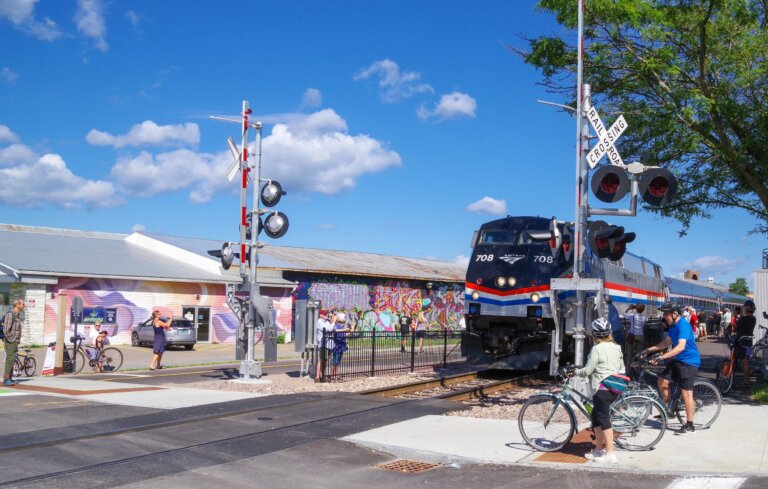The Biden administration has just announced $560 million in grants to help railroad and municipalities improve plan, design, and build at-grade rail crossings around the country, as part of $3 billion allocated to railroad safety over the next five years as part of the $1 trillion infrastructure bill signed into law last November. Planned improvements to at-grade rail crossings include building some overpasses and underpasses in a few cities. This is good news, but unfortunately, a drop in the bucket in light of the huge number of such crossings in this country that need to be improved.
The railroads and those responsible for the roadways should be more proactively and extensively funding such things. This is particularly true given that local governments often elect not to pay for needed improvements. (They are required by the grants to pay 20 percent.) Also, railroads are benefitting from taxpayer-funded infrastructure that benefits their bottom lines and are making the problem worse by running increasingly long trains — sometimes longer than two miles to profit further, with increased impact on public safety. Those mega-trains not only directly cause injury and death as shorter trains do but are more prone to block crossings for long periods, sometimes hours, cutting off parts of town and otherwise blocking routes that can delay emergency responders and even compel children to risk crawling through them to get to school or home on the other side.
Due to the complex interplay of federal and state laws regulating railroads and protecting them from liability, it can be very hard for persons injured or families of those killed by bad crossing design or construction to be compensated by the railroad or other entity responsible for the design and safety of the crossing. Funding rail crossing improvements with federal dollars triggers a type of immunity for that makes it very difficult to hold the railroad accountable in court for a crossing that, despite taxpayer funding, remains dangerous. This is not merely a matter of “everyone should look both ways” before crossing. Some examples: Some at-grade crossings create a “hump,” making the tracks significantly higher than the road grade, which can trap low-clearance vehicles. The nature of the approaching road and/or rail line at-grade rail crossing itself may conceal the danger. Trains crossing in one direction may conceal a train coming from the other direction. Signage may be inadequate. Crossing lights, warning sounds, and barriers may be absent, insufficient, or non-functioning.
We have been successful in recovering compensation for the families of persons killed at a dangerous at-grade railroad crossing. Of course, litigation should not be needed to improve safety and fair compensation; though often it is. Increased government attention to the problem is a step in the right direction and required to the extent they are responsible for keeping citizens safe. But we would prefer that the railroads also fund the extensive safety improvements that need to be made to crossings and accept their responsibilities when they fail to do so.
STRITMATTER LAWYERS ARE EXPERTS IN DANGEROUS ROAD CASES
Our attorneys employ top engineering, safety, and human factors experts in the field when handling dangerous road cases. To find out if you have a valid claim against a governmental entity for injury caused by a dangerous road, schedule your free consultation.
Photo credit: Unspalsh. Photo shows an at-grade railroad crossing.
